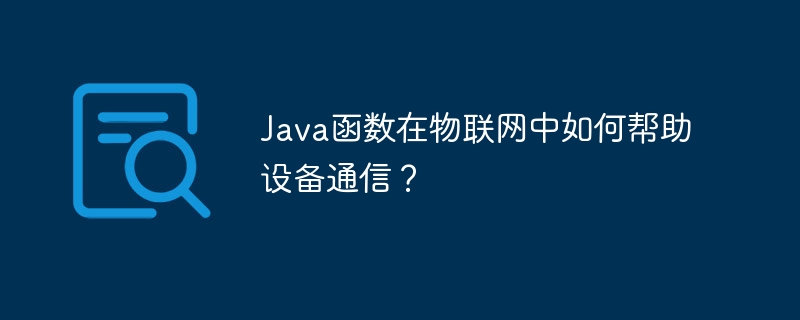
Java functions play a vital role in IoT device communication, enabling seamless communication between devices. They offer the following solutions: Standardization: Allows devices of different protocols and formats to communicate. Cloud deployment: ensuring high availability and scalability. Event-driven: Removes the burden of polling and connection management. Security: Execute in a sandbox environment and protected by the security measures of the cloud platform.

Java functions play a vital role in device communication in the Internet of Things
Java functions play a vital role in the Internet of Things (IoT) role to achieve seamless communication between devices. They provide powerful computing and connectivity capabilities that facilitate real-time data processing and device control. This article explores the use of Java functions in IoT device communication and provides a practical example to illustrate how it works.
Challenges of device communication
In the IoT environment, communication between devices faces the following challenges:
Solutions for Java Functions
Java Functions solve these challenges by:
Practical Case: Sensor Data Processing
Consider a scenario where Java functions are used to process data from a sensor device. Here's how the function works:
Conclusion
By taking full advantage of the power and event-driven nature of Java functions, we can build reliable and scalable IoT device communication systems. They simplify interactions between heterogeneous devices, creating huge potential for IoT applications.
The above is the detailed content of How do Java functions help devices communicate in the Internet of Things?. For more information, please follow other related articles on the PHP Chinese website!
